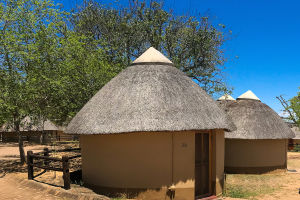The Danube River connects ten countries and dozens of cities, offering an unbeatable mix of nature, history, and culture.
For us travelers, it's a chance to explore Central and Eastern Europe through one of the world's longest waterways, stretching 2,857 km from Germany's Black Forest to the Black Sea.
Key Cities and Attractions Along the Danube
When planning our trip, we should consider these must-see cities and their highlights:
- Vienna, Austria: The capital city's Danube area is free to explore, but popular attractions like Schönbrunn Palace require tickets (about $24). The palace is open daily from 8:30 AM to 5:30 PM. We can reach Vienna by train, bus, or plane. The best time to visit is April to June or September to October to avoid crowds and enjoy mild weather.
- Budapest, Hungary: Famous for its riverside views and thermal baths. Entry to the Széchenyi Thermal Bath costs around $20, open 6 AM–10 PM. Public transport and taxis are convenient ways to get around. Late spring or early autumn offer comfortable temperatures and fewer tourists.
- Belgrade, Serbia: The fortress by the Danube is open year-round with free entry. Nearby museums may charge small fees ($3–$5). Belgrade's bus and taxi services are reliable. Visit in May or September for pleasant weather and local festivals.
- Danube Delta, Romania: A natural wonder with boat tours costing $30–$50 per person depending on the route and length. Tours usually operate from April to October, between 9 AM and 6 PM. The delta is accessible via Tulcea city, which is reachable by train or bus from major Romanian cities. Early summer is perfect for birdwatching.
Getting Around the Danube
Traveling along the Danube is easiest by:
- River Cruises: Many companies offer 5 to 14-day cruises covering multiple countries. Prices start around $1,000 per person, including meals and guided tours. Booking in advance is recommended, especially in summer.
- Trains and Buses: Most Danube cities are well connected by rail and bus. For example, traveling between Vienna and Budapest by train takes about 2.5 hours and costs roughly $30 if booked early.
- Cycling: The Danube Cycle Path stretches over 2,800 km along the river, perfect for adventurous travelers. Bike rentals are widely available in cities like Vienna and Budapest, typically costing $15–$30 per day.
When Is the Best Time to Visit?
We suggest traveling from late April to early October when the weather is warm and most attractions are open. Summer (June to August) is peak season, so book accommodations and cruises well in advance. Spring and autumn offer fewer crowds and comfortable temperatures.
Useful Tips for Traveling the Danube
- Currency: Different countries use different currencies, including the Euro (Austria, Slovakia), Hungarian Forint, Serbian Dinar, and Romanian Leu. Have some local cash handy.
- Language: English is widely spoken in tourist areas but learning simple greetings in local languages helps.
- Packing: Bring comfortable walking shoes, weather-appropriate clothes, and insect repellent, especially for the Danube Delta.
- Safety: The Danube cities are generally safe, but watch your belongings in crowded places.
Sample Day Plan: Exploring Vienna's Danube Area
- Morning: Walk along the Danube promenade, visit the Donauinsel (Danube Island), a public park with free access.
- Afternoon: Tour Schönbrunn Palace (ticket $24), including the gardens.
- Evening: Enjoy dinner at a local restaurant nearby. Reservations recommended in summer.
Why We Should Discover the Danube Together
Traveling along the Danube offers a unique way to connect with Europe's landscapes and cultures. From city palaces to wild deltas, this river journey blends adventure and history. With the right planning, we can enjoy smooth transport, affordable tickets, and the best seasons to visit. So, are you ready to start your Danube adventure? Let's explore this amazing river and all it has to offer!


